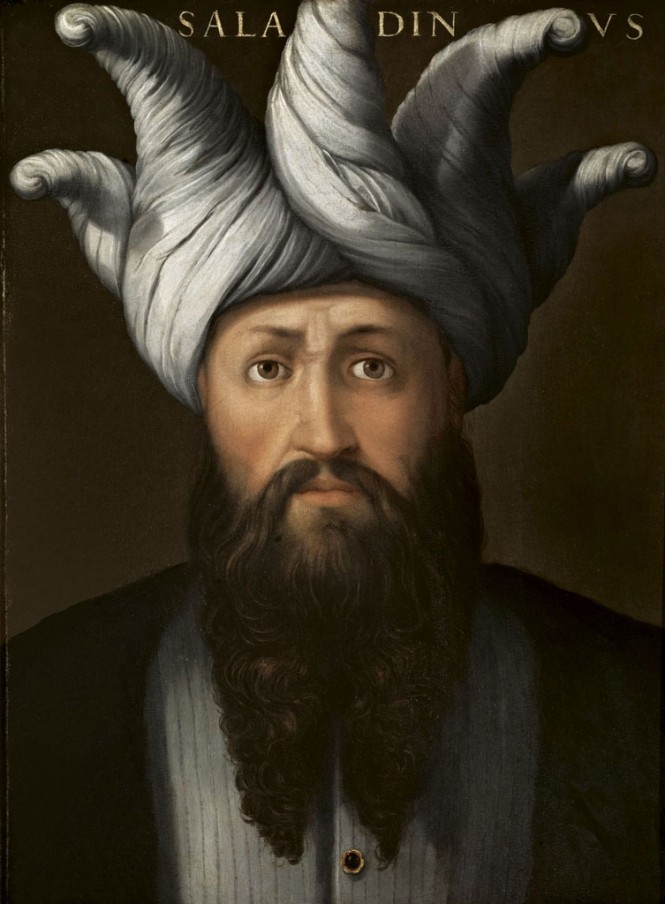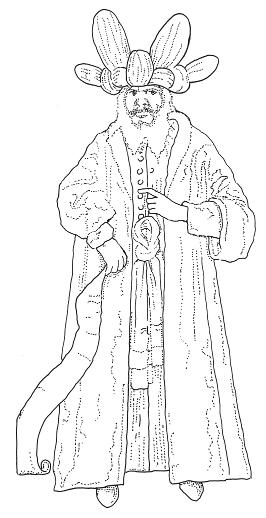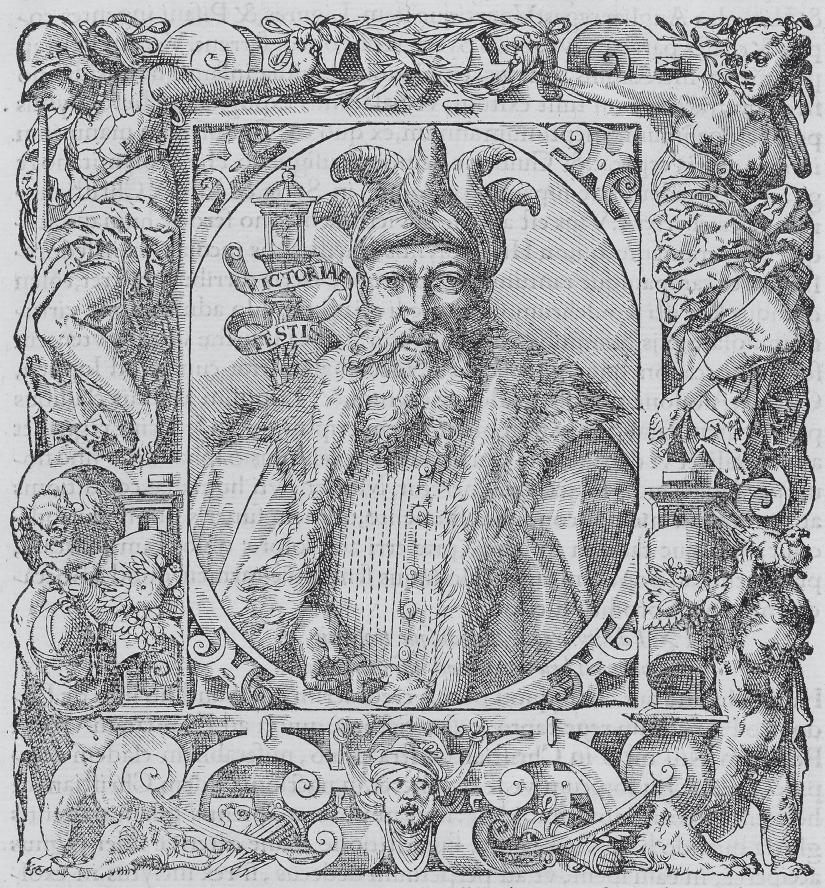Saladin by Cristofano dell'Altissimo (Florence, 1525-1605)
|
|
 |
Source: Italian Ways
|
|
 |
Saladin portrayed as a 15th-16th century Mamluke Sultan in the nāʿūrah turban with horns.
Probably a copy of an earlier painting by another artist. Cristofano dell'Altissimo was employed to make many copies of other works.
Referenced as Figure 2 in "An Ayyubid in Mamluk Guise: The Portrait of Saladin in Paolo Giovio’s Elogia virorum bellica virtute illustrium (1575)" by Marcus Milwright in Mamluk Studies Review, 2014-2015
Saladin, Sultan of Egypt by Cristofano dell'Altissimo. Oil on wood, mid-sixteenth century. Uffizi 1890 n.15.
pp.188-189
The present whereabouts of the original oil portrait in Giovio’s collection is unknown, though two copies survive: one in Florence and the other in Schloss Ambras in Austria. Comparison with the painted portrait by Cristofano dell'Altissimo (d. 1605) probably made between 1552 and 1568 for Cosimo de’ Medici, and now in the Uffizi (fig. 2), suggests that the addition of features into the background of the woodcut is an innovation by Stimmer.
 Figure 8. (a) Drawing of an enameled plaque with a portrait of an unnamed Egyptian sultan. Probably Limoges, sixteenth century. Herzog Anton Ulrich-Museum in Brunswick. |
pp.199-200 The horned turban of Giovio’s Saladin can be linked to another group of European images of the sixteenth century. In this case, they are representations not of Saladin or Ottoman rulers, but of Mamluk sultans and governors. A striking enamelled plaque, probably produced in Limoges in the sixteenth century, depicts a standing figure wearing an elaborate turban (fig. 8.a). The plaque entered the collection of the Dukes of Brunswick in the eighteenth century. The plaque carries an inscription; the first word unfortunately has disappeared but the second reads SOLTANUS. In an article published in 1913 Marquet de Vasselot pointed to the similarities between this plaque and the painting of Saladin by dell'Altissimo made after the original in Giovio’s portrait collection. Both depict the sultan frontally, he wears rather similar clothing (such as the buttoning of the inner robe and the fur lining of his outer cloak), his beard divides into two points, and his turban rises to a series of projections (four being visible in the enamel plaque and five in dell'Altissimo’s painting). The same areas of similarity can be highlighted with the half-length portrait in Stimmer’s woodcut in the 1575 Elogia. Clearly there are also differences, and these are most obvious in the face (and facial expression) of the sultan and in the treatment of the turban. Where dell'Altissimo and Stimmer depict a relatively narrow turban dominated by five curving projections terminating in points, the enamelled plaque has a wider lower section rising to a series of balloon-like folds of cloth. This latter feature invites comparison with the portrait of the Mamluk sultan Qānṣūh al-Ghawrī (r. 1501-16) in the 1590 edition of Cesare Vecellio’s De gli habiti antichi et moderni di diverse parti del mondo libri due. |
